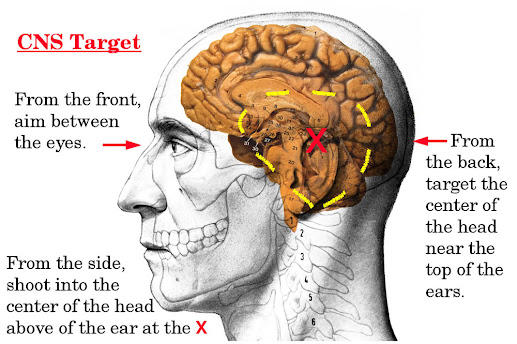Another Outstanding Post at The Patrol Base!
Original, here.
Tuesday, February 16, 2021
The Sniper Big Four
I write a lot about the big five when it comes to a Ranger. Quick review, they are the five pillars which create the foundation that hold up the modern Ranger or (historically) light infantryman (Rangers are the only true light infantry unit left in the Army. The rest are line infantry). These pillars are physical training, marksmanship, medical, mobility (includes land nav), and small unit tactics (includes land nav). Failure to continue to improve or maintain these skillsets regularly will result in erosion and eventual collapse of that pillar. As I reviewed those articles it got me asking myself what are the pillars which hold up the modern sniper? Snipers must have core skills that need to be maintained like the Ranger pillars. These pillars are probably separate and built atop the Ranger big five. Yes, I think that snipers should be selected from a pool of soldiers who have mastered the Ranger big five. (Thinking…changing mind.) That might be true for state-backed armies, it’s probably not true in 4GW. More on that later.
So anyway, I set about to thinkin and rememberin from back in my school and not so school days and came up with the Sniper big four. Here they are in no particular order: target detection, range/wind estimation, stalking/blending, and obviously marksmanship. A few quick reasons for each:
Target Detection: Target detection is a critical sniper task. To shoot your target, you must see your target. This is not always easy. Understanding target detection is all about understanding the eye and how to train it. To fully understand and accomplish the principles of training the eye, the sniper must know its capabilities and limitations. It takes much more than proper sight alignment to justify shooting. Clearly identifying a potential threat is the most critical thing a sniper in a hide site can do. Much of the current sniper training focuses on the physical and mechanical aspects of shooting. Not enough emphasis is placed on the ability to spot targets by looking for target indicators.
Range/Wind Estimation: Believe it or not, most misses are due to incorrect range estimation. Because of this fact, the sniper needs to have multiple tools in his mental rucksack to create levels of backups to mitigate errors in RE. A combination of techniques, both high tech and no tech is imperative. There have been great advances in technology with laser range finders and kestrel wind meters and those are great to have. But the tried-and-true methods, like bracketing and the football field method should be practiced regularly. Additionally, reticle assist methods, like the mil-dot formula or the ACOG BDC method, should be practiced every time one can get to a long stretch of open area. In my opinion, range and wind estimation with the eye is the most perishable skillset of the sniper.
Stalking/Blending: The gathering of battlefield information also plays a major role in the execution of the sniper’s mission. Based on the visibility level in the area, sometimes you need to get closer to your target area. To do this, you must possess field craft knowledge and skills to stealthily move into, through, and around the area of operations undetected. This skill is traditionally called stalking. I am going to add blending as well because the sniper must blend into the background, or the white noise of any situation. It takes a level of artistry, innovative thinking, and acting; art in designing a ghillie suit, acting in an urban environment with whoever is around you, and innovative thinking because to repeat patterns is to die in that life. This is my favorite fundamental and will be the subject of my first article in this new series.
Marksmanship: Snipers are renowned for their marksmanship abilities. The delivery of well executed shots with surgical accuracy makes the individual an asset in today's politically sensitive arenas by having the ability to eliminate key select targets without endangering innocent bystanders. The moral level of war is the strongest. This pillar is obvious and should be studied in depth. Everything from Internal, external, and terminal ballistics to how they relate to the four phases of firing. But in the end, it is all about fundamentals and practice….and in this time of ammo scarcity, that means dry fires. Man, my soldiers used to groan and grumble when I said that. But trust me it works. One of the best snipers I’ve even known used to sit in his chair all night doing holster work, over and over, feeling for the exact break of his trigger. Oh yeah, people like that really do exist and you do not want to fight them. Luckily, all the ones I know are out of the Army and on this side of the divide, minus two. Anyway, we used to make the students do 100 dryfires a day before they even fired a single round on the range. Old school drills like dime/washer drills are still some of the best tools to teach and practice your fundamentals. Do them.
I discussed earlier that snipers should be selected from the best of the soldiers who have mastered the ranger big five skills. Perhaps in other generations of warfare. But the more I think about my own experiences fighting against insurgents in the fourth generation I must say that is the wrong. Consider the three types of snipers you will face on a battlefield:
The Armed Irregular:
· The armed irregular has little to no formal military training, and no formal training in long range marksmanship. This might be a good thing in 4GW. It makes them extremely unpredictable.
· He is usually a member of an irregular or paramilitary force and may or may not carry his weapon openly. He also may be operating on his own initiative, again, making him extremely unpredictable. Because of this, he may go to great lengths to avoid detection as a sniper or combatant.
· His fires are normally not accurate, and he seldom deliberately targets specific individuals. Targets of opportunity on his “block” are his forte; he lets his enemy come to him. Sounds like one of them Rogers’ Rangers Rules to me.
· The armed irregular is intimately familiar with his area of operations and uses it to his advantage. The guerilla swims in the sea of people comes to mind here because he is in his own backyard. With his people.
The Trained Marksman:
· A trained soldier who is an above average shot and has some knowledge of field craft. This soldier is usually armed with a standard issue weapon or scoped version of the standard issue weapon.
· Standard former military member/gun owner who shoots every weekend.
· May be employed individually or in teams to create confusion, cause casualties, or harass and disrupt the flow of operations. Operating in his own backyard, he is extremely deadly.
· Do not underestimate the trained marksman, he is a formidable foe. Every engagement he survives against you only makes him more experienced and more difficult to kill the next time.
The Well-Trained Sniper:
· Specially selected, trained, and equipped with a modern scope-mounted sniper rifle in a modern military. Could be privately funded or self-funded for the sniper in 4GW.
· Expert shot and is trained to engage selected targets with precision rifle fire.
· Capable of hitting targets at extended ranges (out to 1,000 meters),
· Skilled in avoiding detection.
· Used to be rare in an irregular insurgent force but as countries fall apart it will be more common.
· May be employed alone, as a team, or as part of a small kill team element. Best employed operating off their own initiative and intelligence. Do not try to micromanage, you will only get in their way.
· This is the most dangerous adversary to counter, and requires an extensive amount of planning, coordination, and support to eliminate.
There are your three different types of snipers. That is important knowledge to learn for anyone. You should always assess the threat and react accordingly. That being said, when we, as occupying forces, moved through neighborhoods overseas and were shot at with a single shot, well, it didn’t matter what level of training the shooter had. It did not matter what equipment they had. That “sniper?” tied us down, created confusion, and sometimes caused casualties regardless of their experience.
To close, you should master the ranger big five, but sometimes the play goes off script in 4GW. Sometimes the “insurgent” getting involved might be a 55-year-old veteran of the military. What branch, it does not matter. He just loves his nation. He might be diabetic, older, and slower than he used to be at eighteen, but he knows stuff now. He is a former welder who lost his job and is sick of watching his people be replaced. The government, now his enemy through their own declarations, not his, steal what little money he has left. The rest of his money barely pays for the insulin and pain meds which grow more unaffordable by the day. All this while the government calls him a terrorist; an enemy of the country he doesn’t even recognize anymore. He is not allowed to go to church because of Covid, but it does not matter. There is nothing but weak, effeminate men there anyway. To prove the point there is a rainbow flag out front. His church has been captured. He has no one to talk to. His parents are dead. His wife left him years ago and his son died in Iraq. His daughter does not talk to him because he is a racist. He sits in his apartment, looks at his rifle and wonders what the fuck happened. He has nothing left to lose.
Picture that on a mass scale in the US because that is what the government is pushing through their actions. I don't want it, but that doesn't mean its not reality. Sometimes we overthink it in the west. Keep it simple, stupid. Raptor 2, out.







Comments
Post a Comment
Comments are very welcome with the following proviso: Comments can't detract from the subject in the post. Debate is fine; 'hi-jacking', ad hominem, vitriol, 'sniping,' reprehensible language for the sake of it, and so forth will not be tolerated and get the offender banned. Once banned, there's usually no 'do over.'